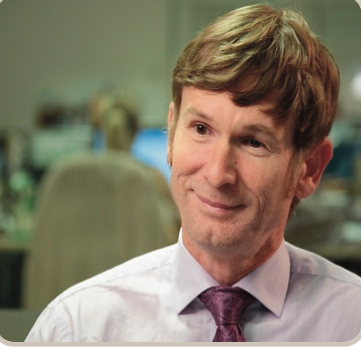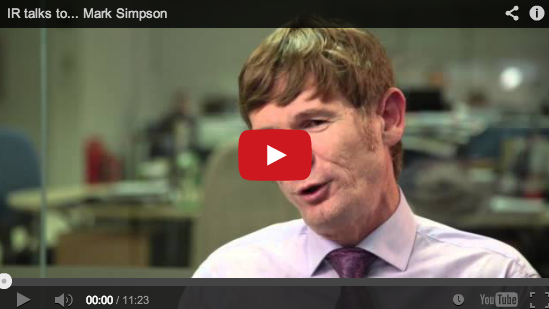Fespa UK Association dates back to 1934 when it was formed as the Display Producers and Screen Printers Association. It has since undergone various name changes, officially appearing in its current guise in January 2012. It represents the interests of screen and digital wide-format print service providers, industrial and specialist printers, the objective being toinspire best practice and ultimately help guide businesses to a profitable and successful future. Mark Simpson has been the association’s president since 2010, so asked him how it is living up to its remit.
When Fespa UK ‘rebranded’ from Prism at the start of 2012 to reinforce its links with Fespa you said you thought the new name would attract more members, who in turn would bring fresh ideas into the organisation? Has that happened?
Let’s say we’ve been cautiously pleased with process since January 2012. Membership has increased by 30% - so from 51 members to 66, admittedly not big numbers but what I’d like to say is that the current membership includes some of the biggest wide-format service providers in the UK, representing something like 30% of the POS market.
The connection with the Fespa brand is key – it’s a globally recognised brand. It has evolved over the years to become a very successful exhibitions business, but what people have got to remember is that it was set-up as a European federation of trade associations. I think the message is, if you want to have access to Fespa’s extensive global network then you need to be members of Fespa UK Association.
In general, trade associations are seeing declining numbers. Do you think cost is an issue or do you think associations - like Fespa UK - need to review their remits?
I don’t believe cost is an issue. If you look at the actual cost for membership to Fespa UK you’re starting off at £384 for the smaller companies rising to £1,032 for the largest. From the day you join you have access to a wealth of surveys, environmental guides like Planet Friendly, publications of real value. So my view would be – especially for the smaller companies paying £384 – you’re getting the value of your membership fee back immediately by being able to download this extensive information.
Your point about reviewing remits is something Fespa UK has been looking at over the last 12 months. We’ve started running surveys, both with the membership and non-members, to find out exactly what they want from a trade association – what is it they value – and I think what’s come out of that is the fact that we need to be developing more industry specific services. By that I mean services that are not available through other business support organisations – technical helplines, industry surveys, networking events, factory visits – that kind of thing.
What % of members are now printers and what % manufactures/suppliers – and is that an ideal ratio?
The current split is 50:50. Admittedly we do want to have more printer members, but having said that, it’s very, very important for us to maintain the supplier membership because I think it’s important that the association has a relationship with the whole supply chain – we’re all inter-dependent on each other.
Do you feel Fespa UK’s current membership puts it in a position where it can really claim to “represent the interests of screen and digital wide-format print service providers, industrial and specialist printers.” It’s perhaps seen as representative, historically, of screen printers.
Yes, you’re right and we can’t really say we’re representative of all the sectors until we grow our membership – which is why we are having a big membership push. Saying that, the current printer members cover screen, wide-format digital, litho, industrial, textile printing… the whole gamut of wide-format services.
How do you actually go about gathering the views of members and represent their key interests?
As I mentioned we’re currently running a survey on what members and non-members want out of an association and on top of that we have very good technical and legal helplines where members can call in and pose questions and raise issues.
I think the other key thing to say is that we’ve got a truly representative board of directors that are all actively involved in running businesses in the sector, and they have extensive industry contacts – on the supplier side, customer side, and of course with other printing companies - so it’s a great sounding board for new ideas and issue that are coming up.
Also, at the recent Fespa London exhibition, it’s telling that the newly formed Graphics and Media Alliance - GAMA [now renamed The Graphics, Print and Media Alliance or GPMA] – chose that platform for its launch. This is an association of about ten different print related trade associations and the idea is that it provides, through a professional lobbyist, a cohesive voice to the Government in relations to policies that affect our industry. What the Government has been saying about printing is that it’s too diverse and there isn’t the time to deal with 15 to 20 different trade associations, so the idea is a good one.
One notable exception in the new alliance is the BPIF, which has decided to opt out as it already lobbies the Government directly – but it doesn’t really represent our sector. So again, if you want to have a voice, Fespa UK members have direct input into policy via this new representation.
What are Fespa UK’s most used services?
The online technical helpline and legal helplines are very well utilised. And interestingly, in the last month alone, we’ve had something like 350 visitors to the site asking for details of membership so they act as good marketing tools too!
Are there any services you are thinking of disbanding/adding?
We’ve had lots of debate over the last year or two on what services we should be developing and what services we maybe should let drop away. The key outcome I think is this realisation that the services we offer need to be industry specific.
You took over as president in 2010. What has been your focus since then?
My focus has been to get real industry issues firmly on the table. From my point of view I see two key areas that our sector needs to address: firstly, the pressure of pricing and margin through overcapacity in certain areas; and secondly, the increasing skills gap.
As you know, print is an ancient industry and we’ve got to do a lot more to attract bright young people into it, so we have launched an apprenticeship scheme [details in article in May issue of Image Reports], backed by the Government so you can get funding for it. We’ve already had a number of members subscribe to that and take apprentices on.
I think it’s been a big miss in the industry, over the last ten years or so, that apprentices have dropped out, because they’re the lifeblood. Despite the fact that print might be seen as a dinosaur industry, our sector in particular is very creative and a very exciting career prospect for a lot of young people.
At Simpson Group we’ve taken on apprentices over the last few years and they’re really enjoying the job and the career they’re getting from it. Interestingly enough, we’ve just recruited a marketing manager from an online retail company too, who sees our industry sector as having better prospects for him – and I think that’s quite an interesting development.
Also, it’s changing that training and apprenticeships necessarily focus on the production side of the business. Traditionally you brought in apprentices and they started on the shopfloor getting to know the machines. At Simpson Group we’ve recently brought in apprentices on the customer services side of the business, and in estimating for the first time – and we’re getting great results. So I’d say have a look at the Fespa UK apprenticeship scheme.
And going forward what is your/the association’s key focus?
The key focus has got to be to develop membership, especially the printer membership. The recent Fespa exhibition in London, has been the first real chance we’ve had to promote the association to a wider audience and we’re expecting great results from that.
Then the focus is about getting the issues I’ve already mentioned - the decline in prices/margins, the skills gap etc. - firmly on the table and coming up with ways to plug the skills gap and promote the inherent value of printed media, and use our members’ success stories to do that.
I think printers have notoriously been a secretive bunch and so they don’t promote themselves particularly well and they keep their trade secrets to themselves. But I think recently there’s come this dawning realisation that other printers aren’t necessarily the main competition. The main competition is other competing media. Printers have got to show what they can differently to online media for instance.
Plus, the wide-format market is a very creative sector, and it’s not just about printed communication, it’s about decoration etc. and an emotive response to whatever the printed media is. Wide-format has got to really focus on its strengths. To do that we’ve got to get the industry more united to promote those special things it can deliver.
An edited version of this interview can be seen as a video clip.
{jathumbnail off}



